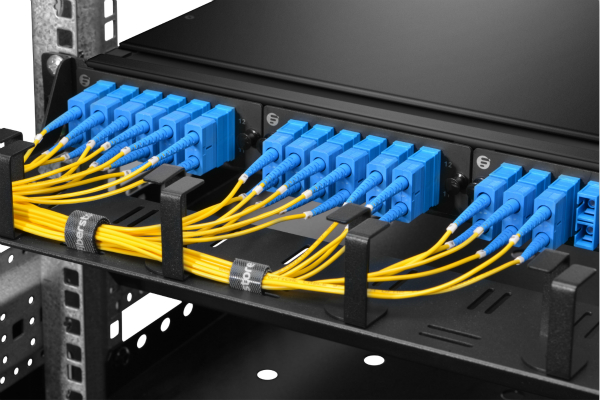OS1 and OS2 single mode fibers are the essential communication medium that works by delivering optical signals in extremely pure glass or plastic fiber. However, for the layperson, all fiber cables look like the same, with differences hidden in their dimensions. But if you study deeper, there are countless changes between them, such as the performance, cost and so on. And choosing the right fiber optic cable is also critical. In this post, I’d like to focus on single mode fiber types.
What Is Single Mode Fiber?
Single mode fiber optic cable is a type of fiber optic cable, which features a core diameter of nominally 9µm. This is the most basic difference between single mode and multimode fibers. Due to its small diameter, there’s only one transmission mode of light. Thus, compared with the multimode fiber, single mode fiber prohibits light reflection so that attenuation of signal could be reduced and offers the highest transmission speed. As a result, light in single mode fiber can go further, which means its transmission distance is longer. In addition, the core number of single mode fiber includes 24, 48, 72, 96 and so on. And you can customize the fiber product with the specific core number.
Figure: Single mode fibers are connected in a patch panel.
Single Mode Fiber Types: OS1 VS OS2
OS1 and OS2 fiber are the two single mode fiber types that are generally well known today.
OS1 is an indoor cable that uses the tight buffered cable construction. And this single mode fiber is compliant with all ITU-T G.652 standards including ITU-T G.652A, ITU-T G.652B, ITU-T G.652C, ITU-T G.652D. In general, the maximum attenuation of OS1 can achieve 1.0 dB/km.
OS2 is an outdoor loose tube fiber optic cable. It’s widely used in outdoor applications where the cabling process applies no stress to the optical cables. Unlike OS1, OS2 cables just meet the ITU-T G.652C or ITU-T G.652D standards. And the maximum attenuation of OS2 is 0.4 dB/km. Therefore, the maximum transmission distance of OS2 is much longer than that of OS1, and OS2 fiber optic cable price is higher than OS1.
The difference between OS1 and OS2 are quite clear. They have different construction, standards, attenuation and transmission distance. As a result, OS1 and OS2 are applied in different applications. OS1 is commonly used in a campus or data center, whereas OS2 is applied in outdoor constructions like the street etc.
How to Choose Single Mode Fiber Types
Knowing single mode fiber types can help us to choose the suitable fiber cable. Transmission distance is always the most important part when buying the cable. Besides, fiber optic cables price is also very critical when making the final choice. When you need fibers for indoors application, choose OS1. And choose OS2 for outdoors uses. However, considering that there’s not a big difference between OS1 and OS2 price and future’s network upgrade, I recommend you choose the OS2 fiber which has better performance. The following is single mode fiber optic cable price comparison between FS.COM and another vendor.
|
OS2 Types
|
FS Price(USD)
|
C2G(USD)
|
|
LC to LC Duplex (1m)
|
2.8
|
42.99
|
|
LC to SC Duplex (1m)
|
2.8
|
32.99
|
|
SC to SC Duplex (1m)
|
2.8
|
38.99
|
|
LC to LC Simplex (1m)
|
1.4
|
39.99
|
|
LC to SC Simplex (1m)
|
1.4
|
21.99
|
|
SC to SC Simplex (1m)
|
1.4
|
21.99
|
We can see, FS.COM offers OS2 fibers with reasonable price and good quality.
Conclusion
OS1 and OS2 are the two single mode fiber types used in telecommunication infrastructure. When you decide to buy single mode fiber cables, consider the transmission distance and price based on your actual need. FS.COM offers you fiber products with good quality and favorable price. For further information on optical fiber products, please contact us via sales@fs.com.

